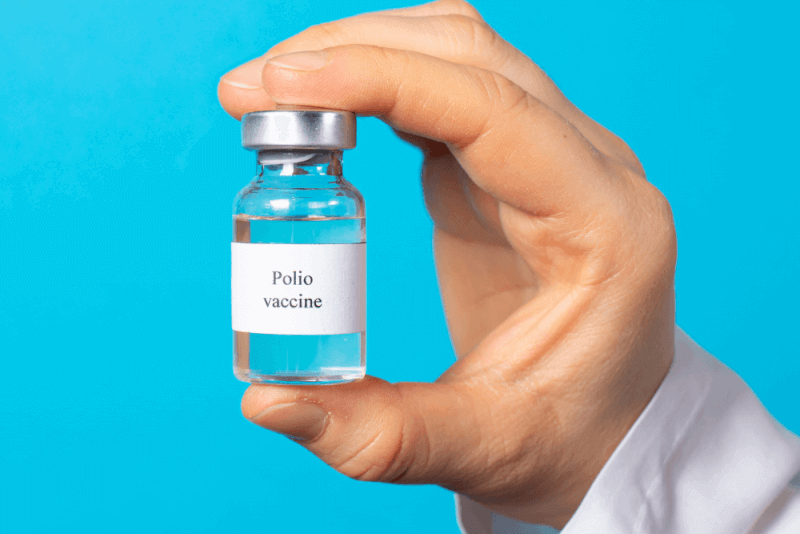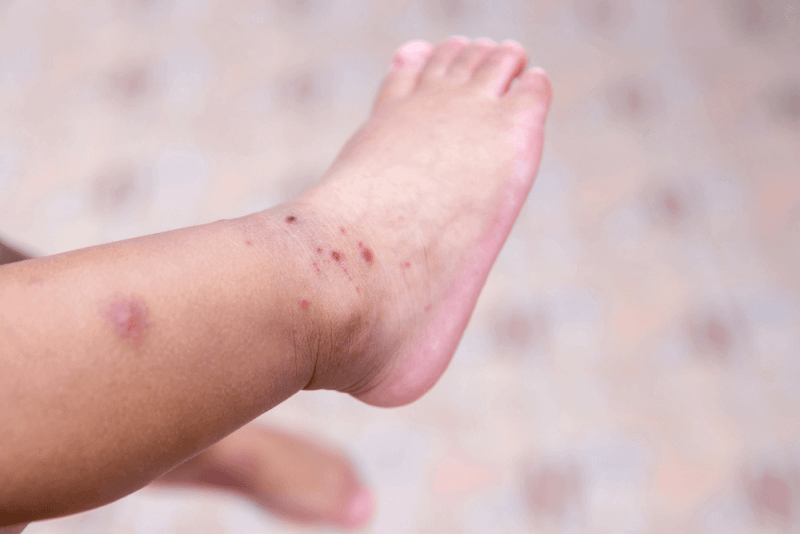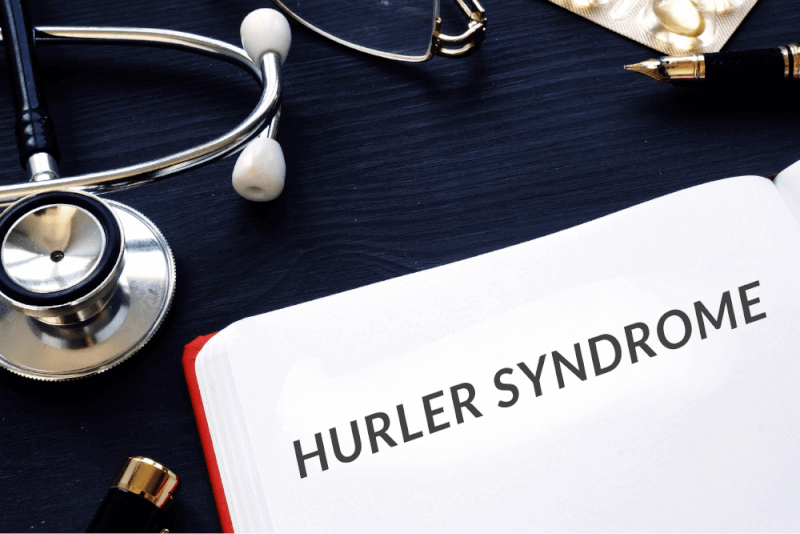30-Second Summary
- Polio is a disease caused by a virus called the poliovirus.
- The virus is transmitted through contact with the feces of an infected person.
- Polio can cause flu-like symptoms but can also lead to paralysis in some cases.
- The polio vaccine is the best way to prevent the disease.
What is polio (poliomyelitis)?
Polio, also known as poliomyelitis, is a viral disease. Before vaccination was common, this virus caused paralysis in many people. Typically, it causes no symptoms or only mild symptoms. However, it can lead to paralysis in some individuals, making it a risky disease.
Thanks to vaccinations, wild virus types 2 and 3 are no longer seen, though type 1 still affects some countries. To prevent the disease, vaccination efforts need to be expanded, as there is no cure for polio.
Types of Polio
Polio, a disease caused by the poliovirus, is divided into different categories. The main reason for these categories is the different areas of the body that the virus affects and attacks. The types of polio include:
Abortive Polio
Abortive polio, which causes gastrointestinal symptoms along with flu-like symptoms, lasts only a few days and does not cause long-term health problems.
Non-paralytic Polio
Also known as meningitis, non-paralytic polio causes inflammation of the membranes around the brain. This type can show more severe symptoms than abortive polio, which may require hospitalization.
Paralytic Polio
Paralytic polio occurs when the polio virus attacks both the brain and the spinal cord. It leads to paralysis of muscles that enable speech, breathing, swallowing, and limb movement. The disease is classified into subgroups depending on the areas affected, including spinal and bulbar types. Some patients may experience both types simultaneously. The clinical presentation is severe, but paralytic polio occurs in only about 1% of cases.
Infantile Polio
This type primarily affects infants and can cause brain swelling.
Post-Polio Syndrome
This is a condition where symptoms caused by polio reappear years later.
Polio (Poliomyelitis) Diagnostic Methods
Diagnosis of polio involves physical examination and testing various body fluids. Additionally, patients should inform their doctor about any recent travels, as these details are crucial for diagnosis. Tests are also conducted to rule out other possible infections.
The body fluids tested include:
- Cerebrospinal fluid
- Blood
- Feces
- Saliva
Due to some symptoms of polio resembling those of the flu, it is also possible for specialists to request additional tests to exclude other infections.
Symptoms of Polio (Poliomyelitis)
The poliovirus does not cause any symptoms in approximately 70% to 95% of infected individuals. Patients who exhibit symptoms mainly show gastrointestinal issues along with flu-like symptoms, largely due to the prevalence of the abortive type of polio. Additionally, paralytic polio presents with severe symptoms.
Symptoms of Abortive Polio
The symptoms caused by abortive polio can resemble those caused by many other diseases. These symptoms start between 3 to 7 days after infection and are typically short-lived, including:
- Sore throat
- Diarrhea
- Constipation
- Vomiting
- Headache
- Fever
- Fatigue
Symptoms of Non-paralytic Polio
The initial symptoms of non-paralytic polio resemble those of abortive polio. Additional symptoms appear a few days later, including:
- Sensitivity to light
- Severe headache
- Tingling and pain in the arms and legs
- Stiff neck
Symptoms of Paralytic Polio
The initial symptoms of paralytic polio start with those of abortive and non-paralytic polio. As days and weeks progress, more advanced symptoms develop, including:
- Muscle spasms
- Sensitivity to touch
Depending on the subtype, various other symptoms can also appear. Spinal polio can lead to paralysis affecting the arms, legs, or both. Bulbar polio complicates breathing, speaking, and swallowing. When both types are present, all symptoms manifest.
Symptoms of Polio
The symptoms of polio can include isolated flu-like symptoms as well as other signs, such as:
- Seizures
- Concentration problems
- Anxiety
- Extreme fatigue
Causes of Polio (Poliomyelitis)
The cause of polio is the poliovirus, which primarily infects the throat and intestines. It can subsequently spread to the spinal cord and brain, leading to other symptoms.
Treatment for Polio (Poliomyelitis)
There are no specific medications to cure polio. If paralysis occurs, physical therapy is necessary to aid recovery. Mechanical ventilation may be required if the respiratory muscles are weakened. Other measures to alleviate symptoms include:
- Plenty of rest
- Starting physical therapy
- Using pain relievers
- Applying warm compresses to relieve muscle pain
- Consuming fluids such as water, juice, and broth
Polio (Poliomyelitis) Vaccine
There is no treatment that can cure polio, hence vaccination is emphasized worldwide as a preventive measure. Polio vaccines are primarily of two types:
Inactivated Polio Vaccine (IPV)
The inactivated polio vaccine (IPV) contains killed or inactivated poliovirus and cannot replicate. This vaccine includes all types of poliovirus and is administered through a series of injections. It does not cause illness nor does it transmit to others. IPV is typically used in regions where polio is not naturally occurring.
Oral Polio Vaccine (OPV)
Oral polio vaccines (OPV) use weakened live viruses that do not cause disease. Available in monovalent, bivalent, or trivalent forms, these vaccines are administered orally.
OPV stimulates an immune response in the intestines, the natural site of poliovirus replication, providing protection from the disease. However, since it induces immunity in the intestines, it can be transmitted through fecal matter, necessitating caution among those in close contact. Although OPV contains weakened viruses, it can very rarely (about one in 2.5 million) cause illness in vaccinated individuals. Additionally, although rare, the vaccine virus can mutate and transmit from person to person, similarly to the wild poliovirus. This occurs primarily in areas with low vaccination coverage.
Exercises for Polio (Poliomyelitis)
Polio can be divided into three phases: acute, subacute, and chronic. Treatment planning is based on these phases.
Acute Phase
The acute phase of polio lasts approximately 6 weeks. During this phase, patients may experience respiratory muscle paralysis leading to respiratory problems. Frequent assessment and the application of respiratory support and tracheostomy are necessary.
Patients may also benefit from applying hot compresses three to four times a day for pain. UV light therapy can be used during this phase due to the poliovirus's sensitivity to UV light.
During the acute phase, patients should avoid active exercises, as these can turn non-paralytic polio into paralytic polio. Exercises in this phase should be passive and within pain limits. Proper bed positioning is crucial, and patients should have their lying positions changed every two hours.
Subacute Phase
The subacute phase of polio can last from 6 weeks to 6 months. During this phase, muscle tests, sensory tests, and tests for normal joint range of motion should be performed. Based on these results, muscle re-education or strengthening is planned. It is important to ensure that these exercises do not exhaust the children or ask them to perform movements they cannot do. During this period, electrical stimulation should not be used, while other treatments like standing tables, tilt tables, and orthotic devices may be applied.
Chronic Phase
As polio patients enter the chronic phase, the rehabilitation plan intensifies. Exercise intensity is increased to the maximum level, and coordinated movements are added to the plan. In addition, the use of splints and devices, PRE (Progressive Resistive Exercises), and PNF (Proprioceptive Neuromuscular Facilitation) techniques, and the selection of appropriate ambulatory devices are crucial.
Who is at risk for polio?
All children and adults who have not been vaccinated against polio are at risk for the virus. Additional risk factors include:
- Pregnancy
- Being under the age of 5
- Living in or traveling to areas with poor sanitation
- Living in or traveling to areas where polio has not been eradicated
How does polio spread?
Polio spreads through sneezing and coughing, or through contact with the feces of infected individuals. Therefore, the modes of transmission for polio include:
- Touching contaminated surfaces
- Being in close contact with someone who has polio
- Coughing
- Sneezing
- Swimming in contaminated water
- Swimming in water where someone with diarrhea has swum
- Consuming food contaminated by infected water
- Drinking or rinsing the mouth with contaminated water
- Not washing hands after using the toilet or changing diapers
What is vaccine-derived polio?
Oral polio vaccines contain a part of the circulating poliovirus which can mutate over time and infect unvaccinated people.
Though this disease stems from a weakened version of the virus, it behaves like the wild poliovirus and can make people sick. Vaccine-derived polio is most commonly seen in type 2 strains.
In areas where polio has been eradicated, the use of live vaccines is stopped, which eventually leads to the disappearance of vaccine-derived polio cases. Significant outbreaks of vaccine-derived polio can occur only where a large proportion of the population is unvaccinated.
Post-polio syndrome
Post-polio syndrome can be simply described as the recurrence of polio symptoms years after the initial infection. The frequency of post-polio syndrome is about 40%, and symptoms can reappear 15 to 40 years later.
Symptoms of post-polio syndrome initially appear in muscles that were affected in the original illness and can worsen over time. The worsening of symptoms occurs slowly. Symptoms of post-polio syndrome include:
- Joint, bone, and muscle pains
- Spinal deformities
- Muscle atrophy
- Muscle weakness
- Exhaustion







